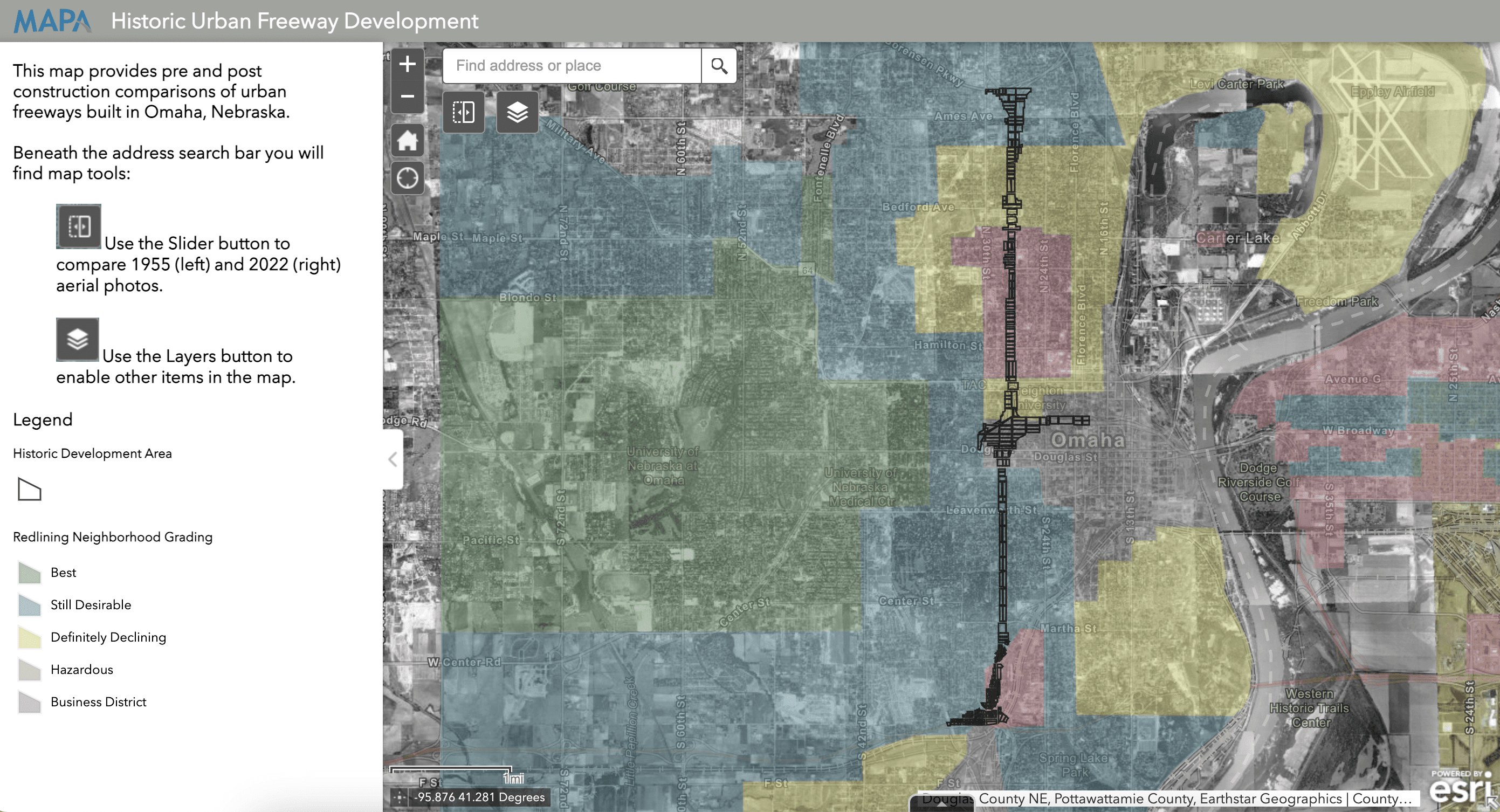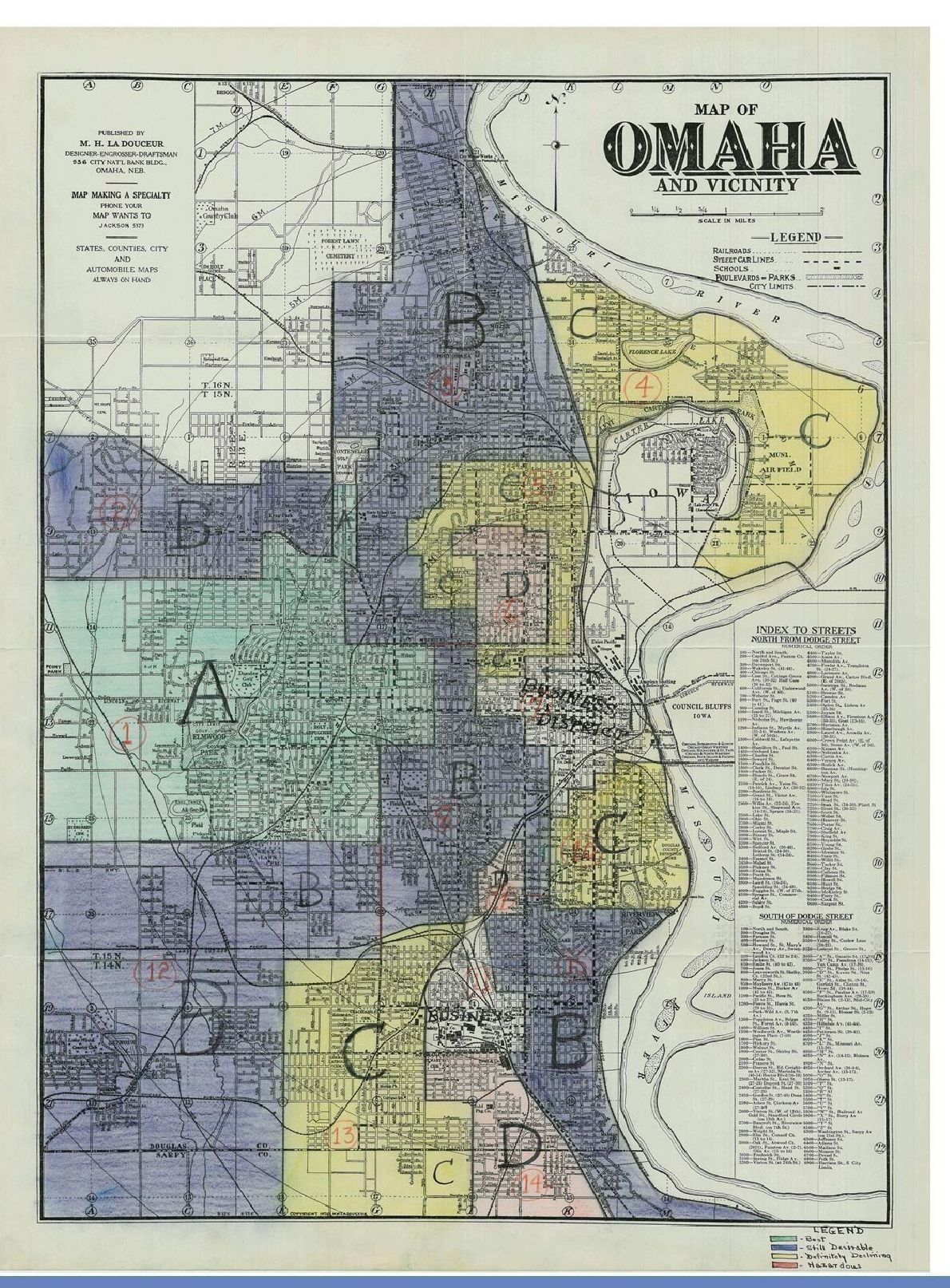History of Redlining in Omaha
Front Porch Investments seeks to positively impact neighborhoods that were previously redlined, addressing the lasting impacts of systemic inequities. Redlining was the now illegal practice of denying credit or other financial services to neighborhoods based on the racial or ethnic composition of their residents. This discriminatory practice prevented families – often families of color - from buying homes with conventional financing, even when they were otherwise qualified for loans.
Redlining a Nation
Redlining began as a government-sanctioned practice during the Great Depression. In 1934, the Federal Housing Administration (FHA) institutionalized redlining by deeming neighborhoods with Black residents as "high-risk" for mortgage lending. These policies persisted into the 1960s and were rooted in overtly racist ideologies, such as the FHA's 1938 underwriting manual, which claimed that the "infiltration of inharmonious racial groups" would increase credit risk.
The Fair Housing Act of 1968 outlawed racial discrimination in housing, including redlining. However, the effects of this systemic exclusion continue to shape communities today, as many formerly redlined neighborhoods face ongoing disinvestment and economic challenges.
Redlining in Omaha
In 1935, the Omaha Home Owners' Loan Corporation created a map categorizing neighborhoods into four risk levels:
- Green: Low risk
- Blue: Moderate risk
- Yellow: High risk
- Red: Highest risk
Green indicates areas formerly identified as "best", blue indicates areas formerly identified as "still desirable", yellow indicates areas formerly identified as "definitely declining" and red - those areas most often home to Black or immigrant communities - indicated areas formerly identified as "hazardous." These classifications led to systematic disinvestment and reinforced segregation as banks refused to lend to prospective home buyers living in red and yellow areas.
Omaha's original "Black Belt" spanned from North 22nd to North 26th Streets, between Cuming and Ohio Streets. This area was heavily targeted for redlining, perpetuating cycles of exclusion and inequity. The effects of this systemic racism were compounded by events such as the 1919 lynching of Will Brown, which drew national attention and federal intervention by the U.S. Army.
Use the Address Eligibility Lookup Tool: Historical Redlining Map to explore the historical impacts of redlining in Omaha. This tool provides valuable insights into how redlining continues to influence the landscape of our communities. Simply enter the address in the search bar to determine its historical classification.

To look up the address of a property, and determine if it is located in a formerly redlined area, use the lookup tool. Enter the address in the search bar. Green indicates areas formerly identified as "best", blue indicates areas formerly identified as "still desirable", yellow indicates areas formerly identified as "definitely declining" and red indicates areas formerly identified as "hazardous."
Undesign the Redline Tour
Undesign the Redline is an interactive exhibit that documents our most systemic and interconnected crises, exploring the history of structural racism and inequality—from the 1938 redlining maps to their continued impact today. More importantly, it challenges us to come together with intentionality to "undesign" these harmful systems and build more equitable communities.
The interactive exhibit is currently available through design the WE, with project videos and virtual reality options to explore.
Click the image below to explore this interactive exhibit.
Learn More about Redlining
Explore the history and lasting impacts of redlining through the below resources:
Noise Omaha: Omaha Redlining Resource Guide
North Omaha History (2024 Adam Fletcher Sasse)
A History of Redlining in Omaha (KMTV 3 News Now)
What is Redlining? (ThinkTV PBS)
How Redlining Prevented Black and Brown Families From Becoming Homeowners (Howard Kennedy School)
For more on the history of fair housing, visit the U.S. Department of Housing and Urban Development (HUD). US HUD History of Fair Housing or the Federal Reserve.
Taking Action
Learn how Front Porch Investments is working to counteract the impacts of redlining through our Greenlining Fund, which aims to invest in and empower historically marginalized communities.


